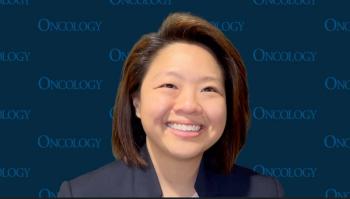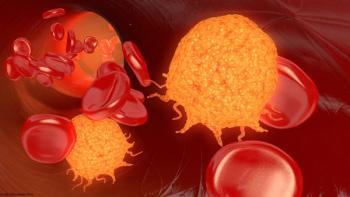
Oncology NEWS International
- Oncology NEWS International Vol 7 No 4
- Volume 7
- Issue 4
Immunologic Test May Redefine Remission in ALL
MEMPHIS, Tenn--Children with acute lymphoblastic leukemia (ALL) who are in apparent remission but have detectable residual leukemic cells using immunologic techniques are four to nine times more likely to relapse than those with no detectable leukemic cells, says Dario Campana, MD, PhD, of St. Jude Children’s Research Hospital.
MEMPHIS, Tenn--Children with acute lymphoblastic leukemia (ALL) who are in apparent remission but have detectable residual leukemic cells using immunologic techniques are four to nine times more likely to relapse than those with no detectable leukemic cells, says Dario Campana, MD, PhD, of St. Jude Childrens Research Hospital.
To identify leukemic cells in bone marrow aspirates, Dr. Campana and his colleagues used antibody probes coupled with fluorescent dyes to specifically tag leukemic cells. Levels of leukemic cells were then calculated using a flow cytometer. This technique can routinely detect one leukemic cell among 10,000 normal cells, which is 100 times more sensitive than conventional methods.
"These immunologic tests redefine remissions; our study shows that they also give physicians information about the likelihood of treatment success," he said.
The study was conducted in 158 children with newly diagnosed ALL who achieved complete clinical remission (Lancet, February 21, 1998). Patients were evaluated at five stages during treatment, while in remission by standard criteria. At each sampling interval, the detection of residual disease was associated with a significantly greater likelihood of treatment failure and leukemic relapse.
Articles in this issue
over 27 years ago
New NCCN Outcomes Data Base Sparks Great Interestover 27 years ago
ODAC Recommends Approval of Two New Taxol Indicationsover 27 years ago
Research into Neuropathic Pain Yields Potential Therapiesover 27 years ago
Vice President Gore Is Featured In Antismoking Radio Spotsover 27 years ago
Genetically Modified Dendritic Cells Enhance Immune Responseover 27 years ago
Research Sets Stage for Possible Autoimmune Therapyover 27 years ago
Proposed Stark II Regulations Spell Trouble for Oncology Careover 27 years ago
Optimal Salvage Therapy for Ovarian Cancer Focus of ICACTover 27 years ago
Ten-Year Study of Survival Rates for Ovarian Cancerover 27 years ago
Virtual Colonoscopy a ‘Kinder, Gentler’ Colon ExamNewsletter
Stay up to date on recent advances in the multidisciplinary approach to cancer.


















































































